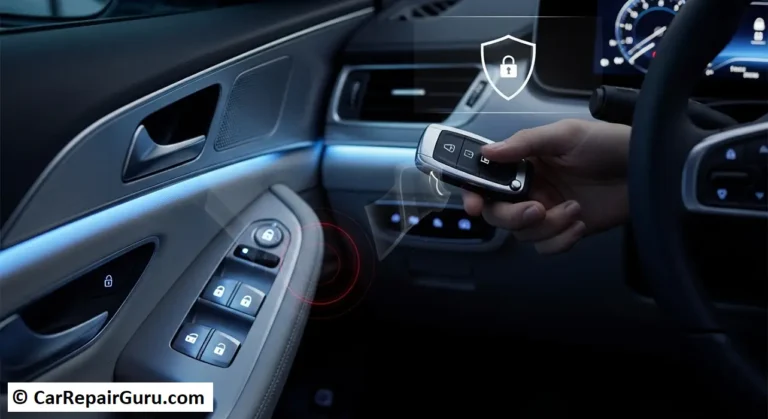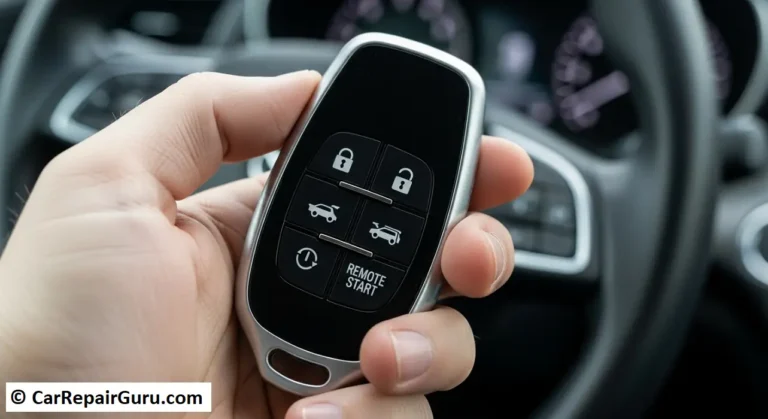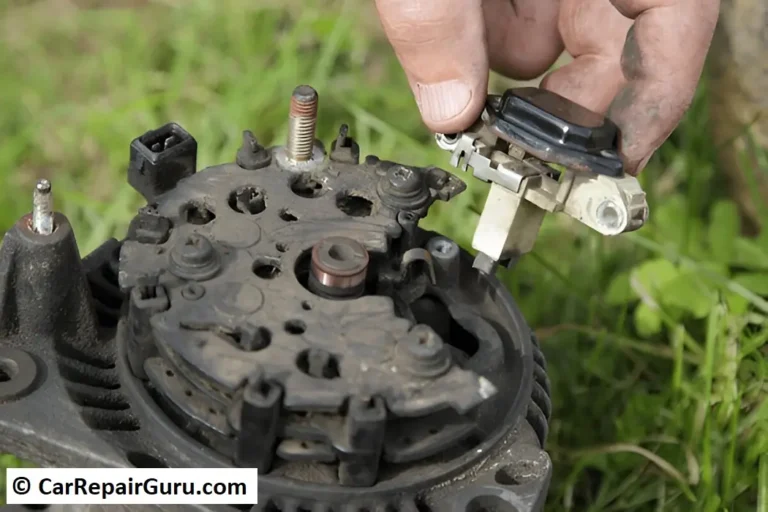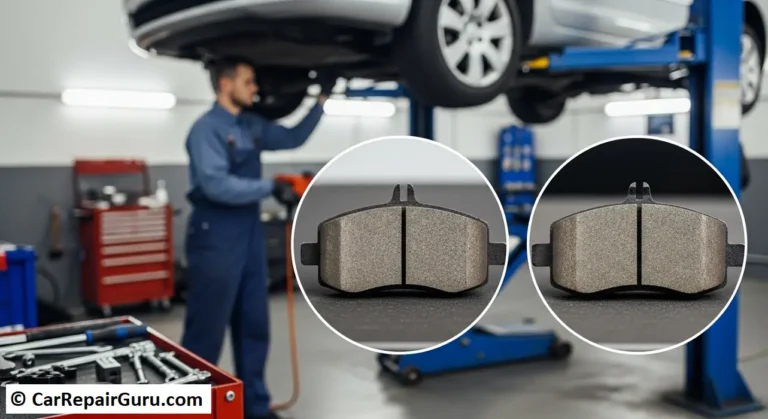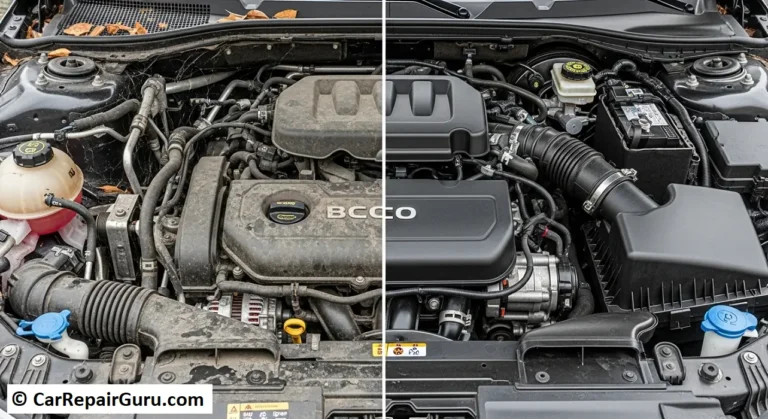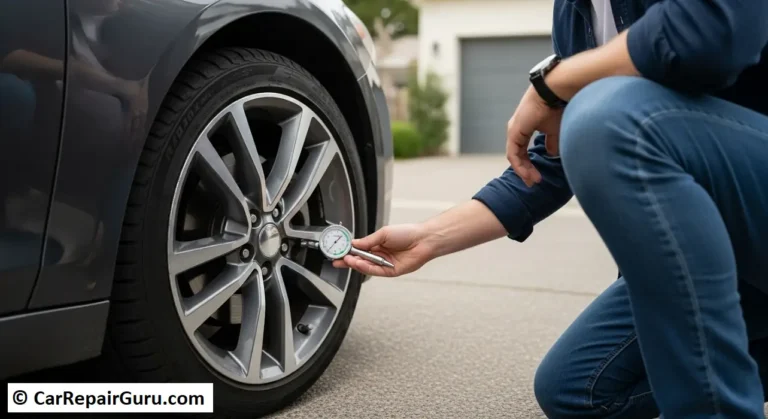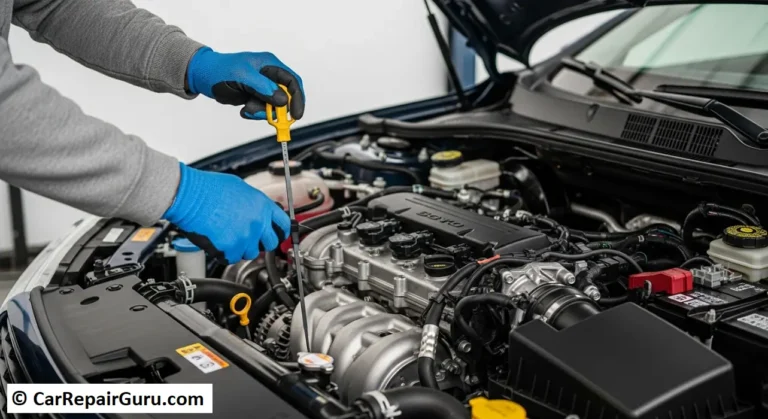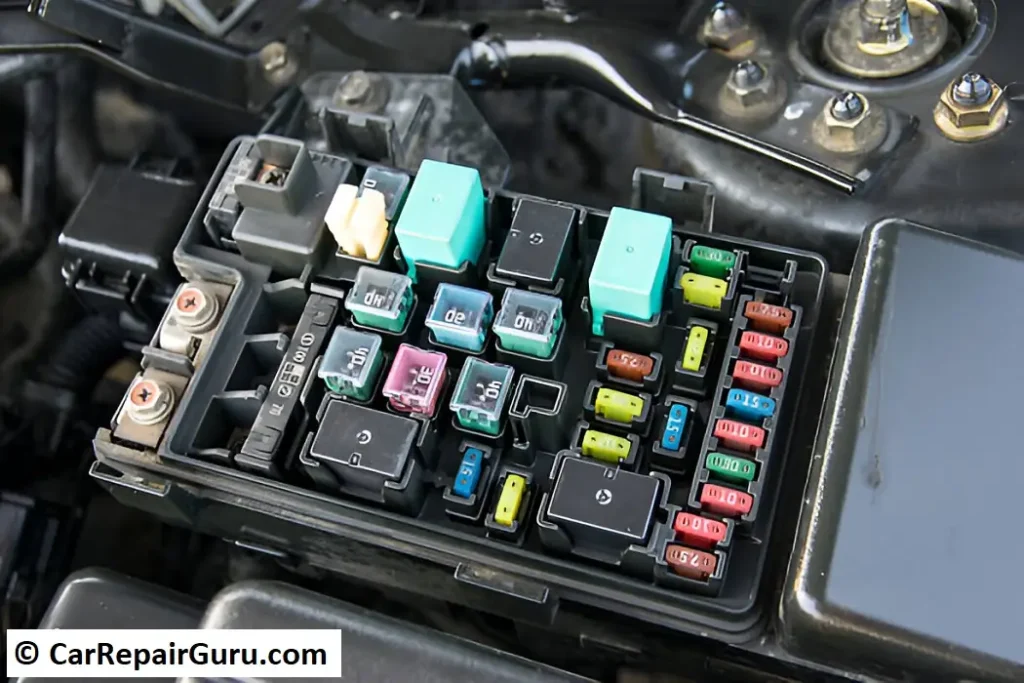
The car fuse box is a crucial component in your vehicle’s electrical system, often overlooked but vital for ensuring safety and functionality. It acts as a protective barrier, preventing electrical overloads from damaging sensitive components such as headlights, audio systems, and engine controls. Think of it as the guardian of your car’s intricate network of circuits.
Understanding the basics of the car fuse box is essential for every car owner. Regular maintenance and awareness can save you from unexpected breakdowns and costly repairs. A blown fuse, for instance, is often a simple fix, but ignoring it could lead to more significant issues.
By familiarizing yourself with the types of fuses, their locations, and how to handle them safely, you empower yourself to tackle minor electrical problems confidently. After all, a well-maintained fuse box contributes to your vehicle’s longevity and ensures a safer driving experience.
What Is a Car Fuse Box?
A car fuse box is a centralized unit that houses the fuses responsible for protecting your vehicle’s electrical circuits. Each fuse is designed to “blow” or break the circuit when excessive current flows through it, preventing potential damage to vital components like the stereo, lights, or even the engine control module.
The car fuse box plays a crucial role in maintaining the safety and reliability of your vehicle. By regulating electrical currents, it prevents overheating and short circuits, which could otherwise lead to electrical failures or even fires. It ensures that each circuit in your car operates within safe limits, offering peace of mind while driving.
Typically located under the dashboard, under the hood, or in the trunk, the car fuse box is equipped with a diagram to help identify the purpose of each fuse. Whether it’s a blown headlight fuse or a malfunctioning power window, understanding how the fuse box works can save you time and money on repairs.
In short, the car fuse box is your vehicle’s first line of defense against electrical problems, ensuring your driving experience remains smooth and safe.
Types of Car Fuses
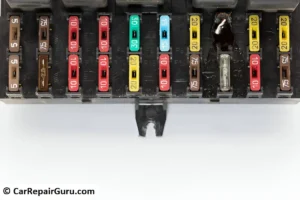
A variety of fuses can be found in a car fuse box, each designed to protect specific electrical circuits. Understanding these types is essential for maintaining your vehicle’s electrical safety and functionality.
Blade Type Fuses
Blade type fuses are the most common in modern vehicles. These compact fuses have two metal prongs that fit into the fuse box and are color-coded for easy identification based on their amperage rating. Blade fuses are used to protect circuits for headlights, power windows, and other essential components.
Glass Tube Fuses
Glass tube fuses, also known as cartridge fuses, are typically found in older vehicles. They feature a glass cylinder with a visible filament inside. When a circuit overloads, the filament breaks, cutting off the current. These fuses are often used in classic car models or specialized electrical setups.
Bosch Type Fuses
Bosch type fuses, also called continental fuses, are common in European vehicles. These ceramic-bodied fuses are durable and designed to withstand higher temperatures. They are used in circuits requiring robust protection, such as engine systems and heating elements.
Fusible Links
Fusible links act as a bridge between high-amperage systems and the car fuse box. These short pieces of insulated wire are designed to melt under excessive current, preventing damage to critical components like the alternator or starter motor.
Fuse Limiters
Fuse limiters are heavy-duty fuses used for high-current applications. They are commonly found in larger vehicles or systems like the battery and main power distribution circuits. Their robust design provides additional protection for major electrical components.
By familiarizing yourself with these fuse types, you can better understand and manage the car fuse box, ensuring your vehicle’s electrical system runs smoothly and safely.
Common Locations of Fuse Boxes in Vehicles
The car fuse box is strategically placed in different areas of your vehicle to ensure accessibility for maintenance and troubleshooting. Depending on the make and model of your car, you may find fuse boxes in the following locations:
Under the Hood
One of the most common locations for a car fuse box is under the hood, typically near the battery. This fuse box protects critical systems like the engine control unit (ECU), headlights, and cooling fans. The robust design and placement under the hood ensure easy access while keeping it safe from road debris.
Under the Dashboard
Another frequent location is beneath the dashboard, often on the driver’s side. This fuse box contains fuses for interior components such as the stereo, air conditioning, and power windows. Accessing it may require removing a panel, but the location is convenient for managing issues with the car’s cabin electronics.
Trunk Area
In some vehicles, particularly luxury models, an additional fuse box is located in the trunk. This setup is common for cars with advanced electrical systems, where the rear fuse box powers components like taillights, audio amplifiers, and rear climate controls.
Variations by Vehicle Make and Model
The number and location of fuse boxes vary widely across different car manufacturers. Some vehicles have a single car fuse box, while others may have multiple, strategically positioned for optimized wiring and functionality. Always consult your owner’s manual to locate the fuse box specific to your car model.
Knowing these locations makes it easier to address electrical issues, helping you maintain your vehicle’s functionality and safety.
How to Read a Car Fuse Box Diagram
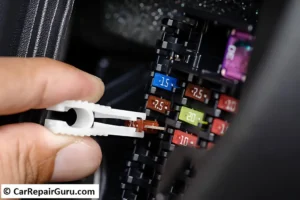
Understanding how to read a car fuse box diagram is essential for troubleshooting electrical issues and maintaining your vehicle. This diagram acts as a map, guiding you to the correct fuse for specific circuits and helping you avoid unnecessary guesswork.
Symbols and Labels Explained
A car fuse box diagram uses symbols and labels to represent various circuits in your vehicle. Common symbols include a headlight for the lighting system, a battery icon for power circuits, and a speaker for the audio system. Each symbol is accompanied by a label, often a short description or abbreviation, such as “ECU” for the engine control unit or “AC” for air conditioning.
Finding the Diagram in Your Vehicle’s Manual
While most cars have a fuse box diagram printed on or near the actual fuse box cover, you can also find it in your vehicle’s owner’s manual. The manual provides a detailed explanation of each symbol and circuit, making it easier to locate specific fuses. For newer vehicles, manufacturers may also offer digital manuals or downloadable PDFs for quick access.
Identifying Specific Fuses Based on the Diagram
To identify a specific fuse, refer to the diagram to match the circuit you’re troubleshooting. For example, if your car’s radio stops working, locate the fuse labeled “Radio” or “Audio” on the diagram. Once identified, check the corresponding fuse in the car fuse box for signs of damage, such as a broken filament or discoloration.
Each fuse is also marked with an amperage rating, such as 10A or 15A, indicating the maximum current it can handle. Make sure to replace a blown fuse with one of the same rating to avoid electrical damage.
By learning to read the car fuse box diagram, you can efficiently address minor electrical issues, saving time and money while keeping your vehicle in top condition.
Steps to Check and Replace a Blown Fuse
A blown fuse can cause various electrical components in your vehicle to malfunction. Knowing how to check and replace a fuse can save you time and money on repairs. Follow these steps to handle a blown fuse effectively.
Identifying a Blown Fuse
Blown fuses often show visible signs of damage, such as a broken filament inside the fuse or blackened, charred marks on the casing. Common symptoms of a blown fuse include non-functioning headlights, power windows, or a dead car radio.
Tools Needed
- Fuse puller: A small tool designed to safely extract fuses from the fuse box.
- Multimeter: Useful for testing whether a fuse is still functional.
- Replacement fuses: Always have spares that match your vehicle’s amperage requirements.
Step-by-Step Guide
- Safety Precautions
Turn off the ignition and disconnect the battery to prevent electrical shocks or short circuits. - Locating the Correct Fuse
Refer to your car fuse box diagram to find the fuse corresponding to the malfunctioning circuit. - Removing and Inspecting the Fuse
Use the fuse puller to carefully extract the suspect fuse from the car fuse box. Inspect it for a broken filament or discoloration. If unsure, use a multimeter to test the fuse’s continuity; a functional fuse will show a reading, while a blown fuse will not. - Installing a New Fuse
Insert a replacement fuse with the same amperage rating into the slot. Ensure it fits snugly and securely.
Testing the Circuit
Once the new fuse is installed, reconnect the battery and test the circuit by turning on the associated component (e.g., headlights or radio). If it functions properly, the issue is resolved.
If the new fuse blows immediately after replacement, there may be an underlying issue, such as a short circuit or overloaded system, requiring professional inspection.
By understanding these steps, you can confidently manage your car fuse box, ensuring your vehicle’s electrical system remains in top working order.
Safety Tips When Handling Car Fuses
Handling fuses in your car fuse box requires caution to avoid damaging your vehicle’s electrical system or injuring yourself. Here are essential safety tips to follow:
Disconnect the Battery
Before inspecting or replacing a fuse, always disconnect the car battery. This prevents accidental short circuits and ensures your safety while working on the electrical system. Simply remove the negative battery terminal using a wrench or similar tool.
Use the Correct Fuse Ratings
Every fuse in the car fuse box is designed to handle a specific amperage. Always replace a blown fuse with one that matches the rating indicated in your vehicle’s owner’s manual or fuse box diagram. Installing a fuse with a higher or lower rating can lead to electrical failures or fires.
Avoid Makeshift Fixes
Never attempt to bypass a fuse using makeshift solutions like aluminum foil or wire. These temporary fixes eliminate the safety barrier that fuses provide, increasing the risk of severe damage to your car’s components. Always use properly rated replacement fuses.
By following these safety tips, you can confidently handle your car’s electrical system while maintaining the integrity of the car fuse box and ensuring a safe driving experience.
When to Consult a Professional Mechanic
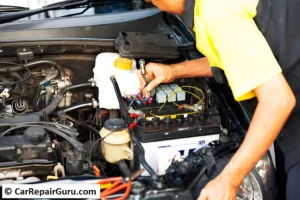
While basic fuse replacements can often be handled at home, certain situations call for the expertise of a professional mechanic.
Persistent Fuse Issues
If a fuse in your car fuse box keeps blowing shortly after replacement, this indicates an underlying electrical problem such as a short circuit, wiring issue, or overloaded circuit. These issues require specialized tools and knowledge to diagnose and repair.
Complex Electrical Problems
For complex electrical failures, such as malfunctioning control modules, irregular power distribution, or issues affecting multiple systems, it’s best to seek professional help. Mechanics have the equipment to perform detailed diagnostics, including pinpointing faults in your car’s wiring or electrical components.
In such cases, attempting DIY repairs can worsen the issue or result in safety hazards. A professional mechanic ensures the problem is resolved safely and effectively, protecting both your vehicle and your peace of mind.
Conclusion
The car fuse box is a vital component of your vehicle’s electrical system, safeguarding circuits from overloads and ensuring smooth functionality. Understanding its role, learning to identify and replace blown fuses, and following safety precautions are essential for maintaining your car’s performance and safety. Regular inspections and proper handling can prevent minor issues from escalating into costly repairs. When in doubt, consult a professional mechanic to address persistent or complex electrical problems. By staying proactive, you can ensure your vehicle’s electrical system remains reliable and efficient for years to come.
FAQs About Car Fuse Boxes
Q1: What does a car fuse box do?
A: The car fuse box protects your vehicle’s electrical circuits by breaking the circuit during an overload. Each fuse is designed to blow when the current exceeds a safe level, preventing potential damage to components like your headlights, radio, and engine systems.
Q2: Where is my car fuse box located?
A: The car fuse box is typically located under the hood, beneath the dashboard, or in the trunk area. The specific location can vary depending on your vehicle’s make and model. Always refer to your vehicle’s owner’s manual or the fuse box diagram for exact placement.
Q3: How can I tell if a fuse is blown?
A: A blown fuse often has a visible break in the filament or may appear discolored. Alternatively, you can use a multimeter to check the fuse for continuity. If the fuse doesn’t conduct electricity, it’s blown and needs to be replaced.
Q4: Can I replace a car fuse myself?
A: Yes, replacing a fuse is a relatively simple task if you have the correct tools, such as a fuse puller, and take the necessary safety precautions. Always ensure that you use the correct fuse rating to avoid further electrical issues.
Q5: What happens if I use the wrong fuse?
A: Using the wrong fuse in your car fuse box can lead to electrical damage or fire hazards. It’s essential to replace a blown fuse with one that matches the amperage rating specified for the circuit to prevent further damage to your vehicle’s electrical system.
